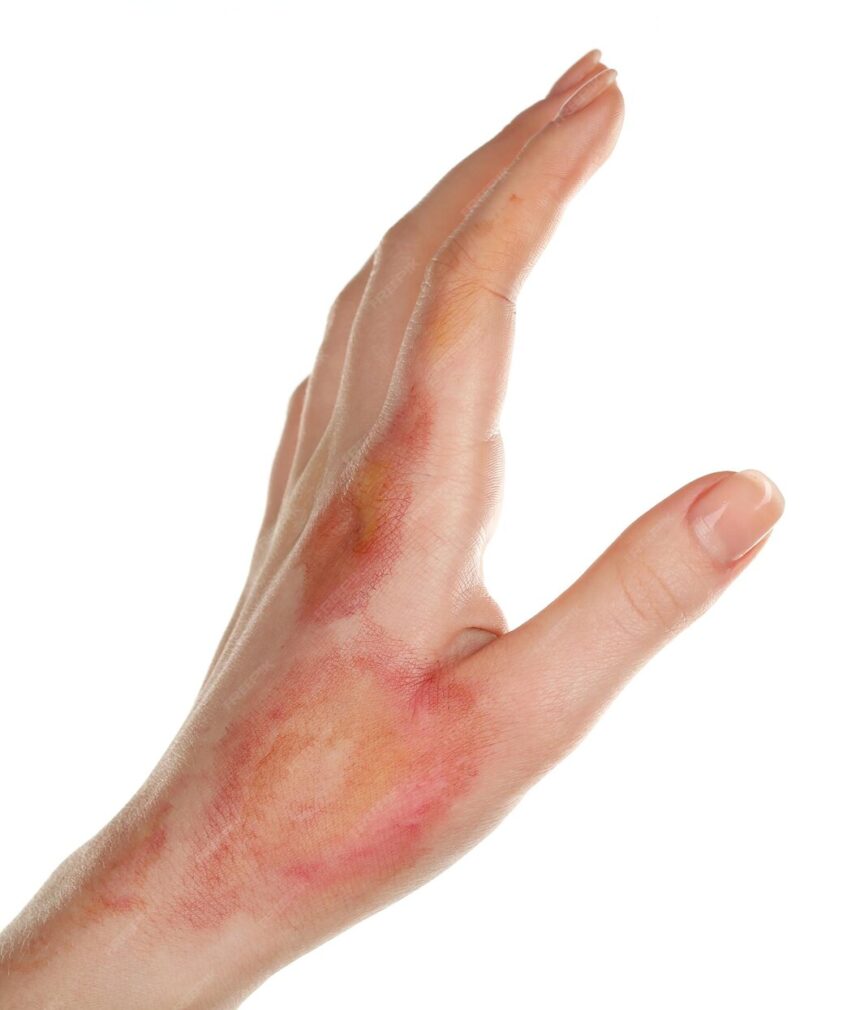Cellulitis is a common bacterial skin infection that can affect anyone, regardless of age or gender. While it often starts as a minor irritation, it can quickly escalate into a serious condition if left untreated. Understanding the signs and symptoms of cellulitis is crucial for prompt diagnosis and effective treatment.
What is Cellulitis?
Cellulitis occurs when bacteria enter the skin through a cut, wound, or crack, causing infection and inflammation in the deeper layers of the skin. The most common bacteria responsible for cellulitis are Streptococcus and Staphylococcus aureus. While cellulitis can develop anywhere on the body, it commonly affects the lower legs, arms, and face.
Signs and Symptoms
- Redness and Swelling: The affected area typically becomes red, swollen, and tender. The redness may gradually spread as the infection progresses.
- Warmth and Pain: The skin may feel warm to the touch, and individuals may experience pain or tenderness in the affected area.
- Fever and Chills: In some cases, cellulitis can cause systemic symptoms such as fever, chills, and sweating.
- Blistering or Pus Formation: As the infection worsens, blisters or areas of pus may develop on the skin surface.
- Skin Discoloration: In severe cases, the skin may take on a dusky or purplish hue, indicating compromised blood flow to the affected area.
Risk Factors
Several factors can increase the risk of developing cellulitis, including:
- Skin Injuries: Cuts, scrapes, insect bites, or surgical wounds provide entry points for bacteria.
- Skin Conditions: Pre-existing skin conditions like eczema, psoriasis, or athlete’s foot can weaken the skin barrier, making it more susceptible to infection.
- Compromised Immune System: Individuals with weakened immune systems, due to conditions like diabetes, HIV/AIDS, or cancer, are at higher risk of developing cellulitis.
- Lymphedema: Swelling of the limbs due to impaired lymphatic drainage can predispose individuals to recurrent cellulitis.
Diagnosis and Treatment
Diagnosing cellulitis typically involves a physical examination by a healthcare professional. In some cases, additional tests such as blood cultures or imaging studies may be performed to rule out more serious conditions or identify the specific bacteria causing the infection.
Treatment for cellulitis usually involves a course of oral or intravenous antibiotics to eradicate the bacterial infection. Pain relievers may be prescribed to alleviate discomfort, and elevating the affected limb can help reduce swelling. In severe cases or when complications arise, hospitalization may be necessary for intravenous antibiotics and close monitoring.
Prevention
Preventing cellulitis involves taking measures to reduce the risk of skin infections:
- Keep Skin Clean and Moisturized: Practice good hygiene and moisturize dry skin regularly to maintain skin integrity.
- Protective Measures: Wear appropriate footwear to prevent foot injuries, and use insect repellent to minimize the risk of insect bites.
- Prompt Wound Care: Clean cuts, scrapes, and other wounds promptly with soap and water, and apply an antiseptic ointment.
- Manage Underlying Conditions: Control underlying conditions such as diabetes or lymphedema to reduce the risk of recurrent cellulitis.
Recognizing the signs of cellulitis is essential for early intervention and successful treatment. Prompt medical attention is crucial to prevent complications and ensure a speedy recovery. By understanding the symptoms, risk factors, and preventive measures associated with cellulitis, individuals can take proactive steps to protect their skin health and overall well-being.










